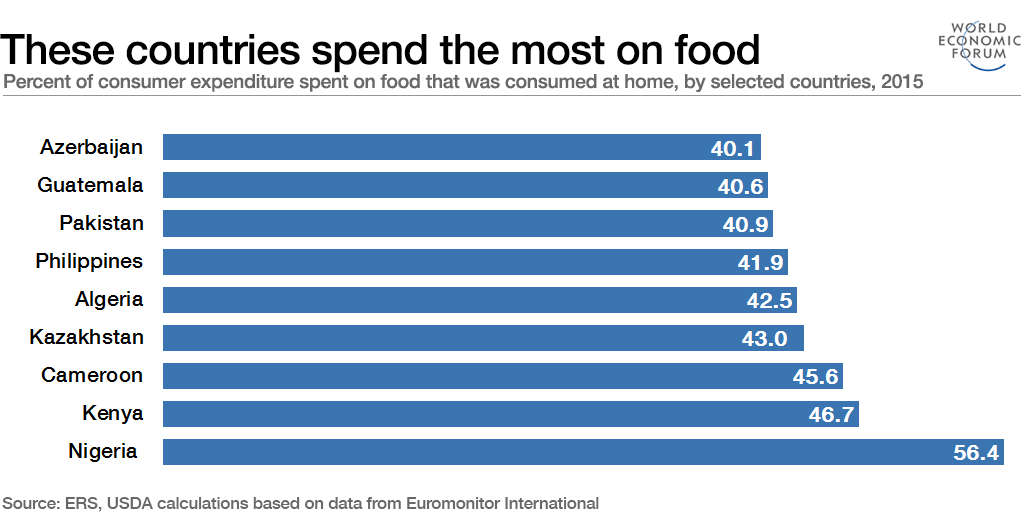Which countries spend the most on food? This map will show you

The more developed a country is, the smaller the percentage of household income it spends on food. Image: REUTERS/Franciszek Mazur/Agencja Gazeta

Get involved with our crowdsourced digital platform to deliver impact at scale
Stay up to date:
Food Security
Americans spend just 6.4% of their household income on food. That’s according to the latest figures compiled by the US Department of Agriculture (USDA). Generally speaking, the more developed a country is, the smaller the percentage of household income it spends on food, as this map shows.

There are only eight countries in the world that spend less than 10% of their household income on food. Four of these are in Europe: the UK is third at 8.2%, followed by Switzerland at 8.7%; Ireland spends 9.6% and Austria 9.9%.
The remaining four countries are spread across the globe. The US spends the least at 6.4%, Singapore spends the second lowest amount at 6.7%. Canada spends 9.1% on food, while Australia spends 9.8%.

Nigeria spends over half of household income on food, and there are nine other countries that spend over 40% on food.
Four of them are in Africa: Nigeria 56.4%; Kenya 46.7%; Cameroon 45.6%; and Algeria 42.5%. Four are in Asia: Kazakhstan 43.0%; Philippines 41.9%; Pakistan 40.9%; and Azerbaijan 40.1%. Guatemala is the only South American country to appear in the list and spends 40.6% of its household income on food.

The figures do not mean that food is more expensive in Nigeria than in the US. In fact, quite the reverse. The average American spends $2,392 per year on food, the average Nigerian half that: $1,132. The average Kenyan spends just $543 a year on food.
However, there can be wide disparities within a country.
Over the past 25 years, the poorest 20% of households in the US spent between 28.8% and 42.6% on food, compared with 6.5% to 9.2% spent by the wealthiest 20% of households.
Don't miss any update on this topic
Create a free account and access your personalized content collection with our latest publications and analyses.
License and Republishing
World Economic Forum articles may be republished in accordance with the Creative Commons Attribution-NonCommercial-NoDerivatives 4.0 International Public License, and in accordance with our Terms of Use.
The views expressed in this article are those of the author alone and not the World Economic Forum.
Related topics:
The Agenda Weekly
A weekly update of the most important issues driving the global agenda
You can unsubscribe at any time using the link in our emails. For more details, review our privacy policy.
More on Food SecuritySee all
Charlotte Edmond
April 11, 2024
Brian D’Silva and Abir Ibrahim
March 19, 2024
Joneigh Khaldun
February 16, 2024
Charlotte Edmond and Rebecca Geldard
February 12, 2024
Iliass El Fali
February 5, 2024
Thea de Gallier
February 2, 2024






